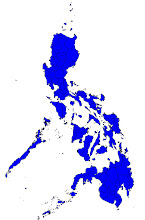By Anna Valmero (Philippine Daily Inquirer)
MANILA, Philippines – The Commission on Elections (Comelec) said Monday that about 17 million ballots have already been printed for the country’s first ever automated elections in May.
“Right now, we have printed 17 million out of the total 50 million ballots. The newly printed ballots are to be used in polling precincts mostly in Visayas and Mindanao and some Luzon areas,” said Comelec Commissioner Gregorio Larrazabal, who chairs the steering committee on automation.
With a fifth printer set to arrive by March 20 at the National Printing Office (NPO), Comelec expects to finish the printing of all 50 million ballots by April 25—also the start of the shipment of ballots, the poll machines, ballot boxes and other election paraphernalia, said the poll official.
When the additional printer arrives, Larrazabal said they expect to ramp up production of 900,000 ballots printed daily, up from the current daily output of 650,000 to 700,000.
“When the fifth printer arrives next week, the earliest on March 20, we see production of up to 900,000 ballots per day. This would enable us to finish printing all ballots by April 25,” he noted.
Ballots to be used in Metro Manila would be printed last since shipment would be easier from NPO to municipal treasury offices compared to Visayas and Mindanao regions, he said.
In late February, the NPO printed the 1.7 million ballots for use in the Autonomous Region in Muslim Mindanao (ARMM) and started printing the main ballot to be used in 1,600 municipalities, cities or districts nationwide, except in ARMM.
The main ballot to be used in most parts of the country measures 8.5 inches wide and 25 inches long, containing English and Filipino translations for voting instructions for both national and local positions.
The ballot security features include the custom-made 160 GSM imported paper, invisible UV ink from Comelec and Smartmatic-TIM, a regular 2D barcode, Comelec’s own security markings and unique precinct-based numbers, which can only be recognized by a specific poll machine. The main ballot has an additional UV ink marking from NPO as a redundant security measure, Larrazabal said.
To vote using the special paper ballots for automated polls, a voter must the ovals opposite the names of the national and local candidates printed on both sides of the paper shade using special permanent marking pens. After filling out a ballot, a voter will feed it to a machine for scanning and counting of the votes.




No comments:
Post a Comment